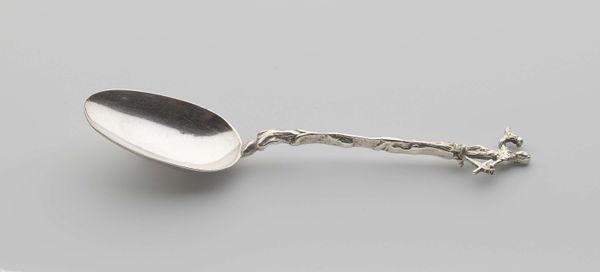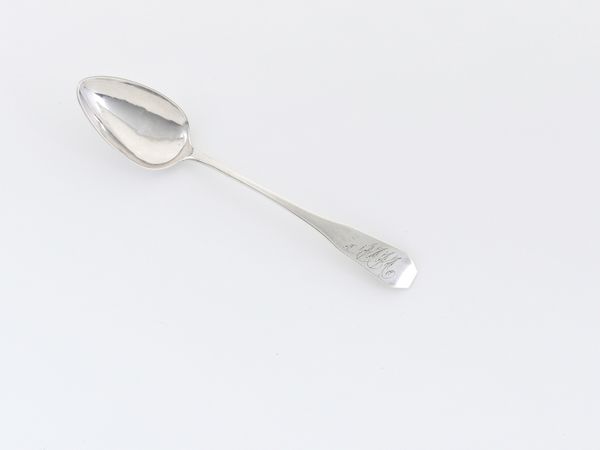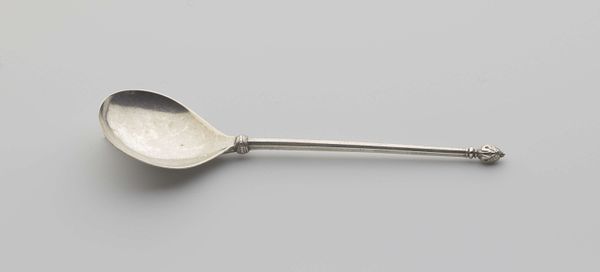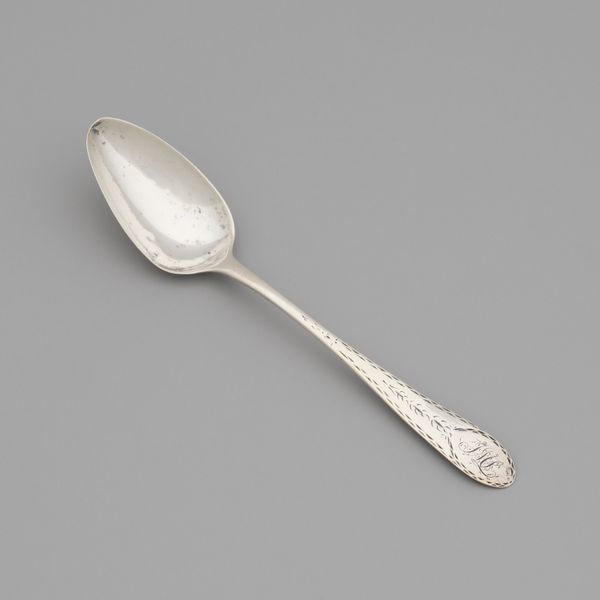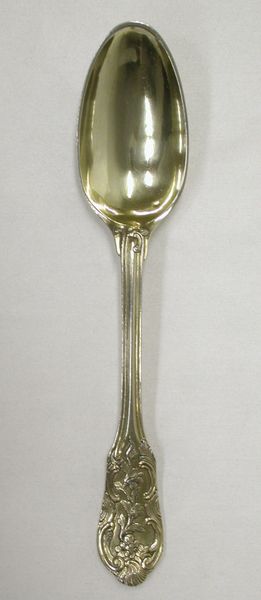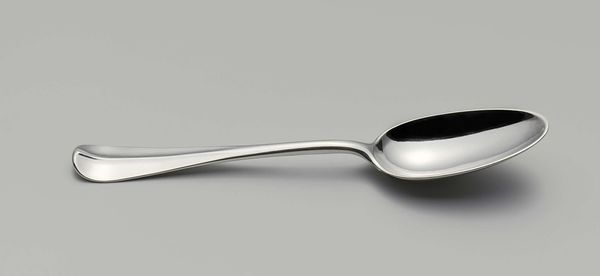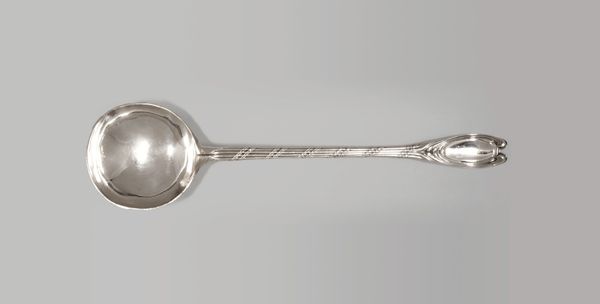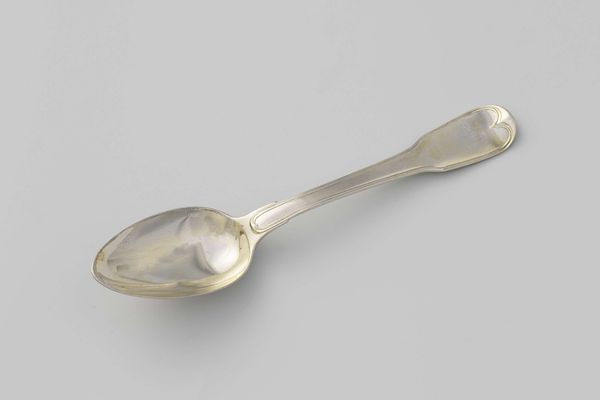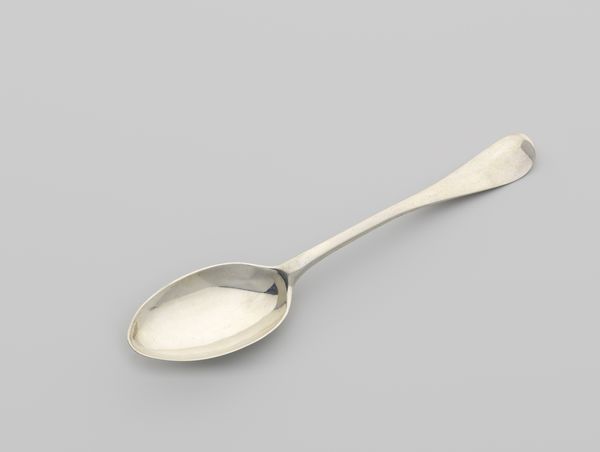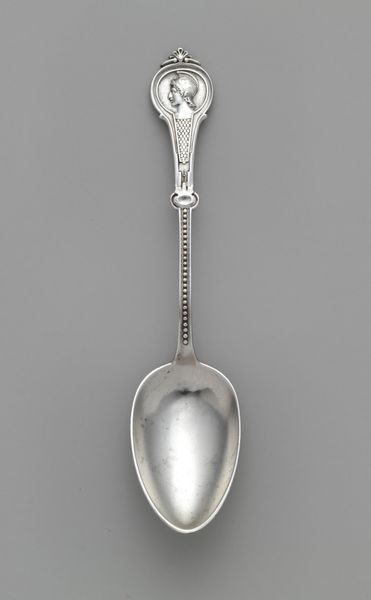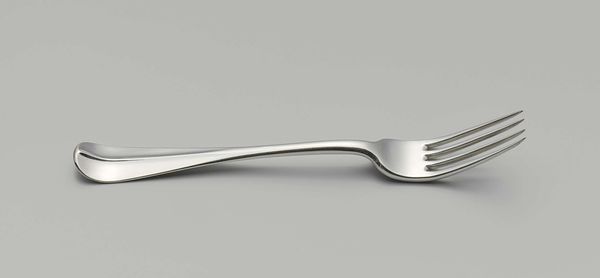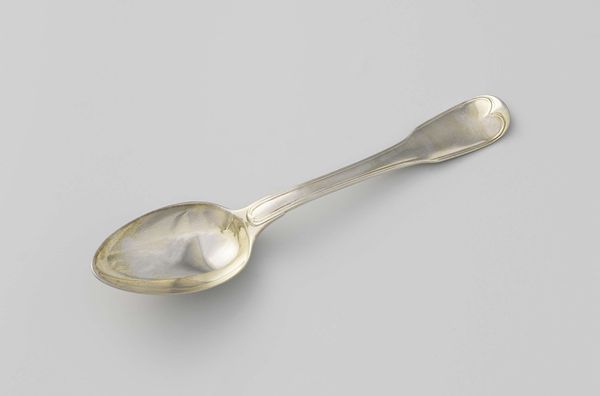
silver, metal, sculpture
#
silver
#
baroque
#
metal
#
sculpture
#
decorative-art
Dimensions: Length: 14 1/4 in. (36.2 cm)
Copyright: Public Domain
Editor: This is a "Hash spoon," made of silver, dating back to the mid-18th century. It’s currently held at the Metropolitan Museum of Art. It strikes me as surprisingly elegant for a simple utensil. What’s your take on this object? Curator: It’s crucial to contextualize this object within the socio-economic framework of the 18th century. Silverware, particularly elaborate pieces like this Baroque spoon, signaled wealth and status. How might this spoon reflect the era’s power dynamics? Who was using it, and what did its presence at the table communicate? Editor: Well, given that it’s called a “Hash spoon”, it likely wasn’t part of formal place settings. I imagine it used by someone eating alone. Curator: Interesting point! “Hash” was often served to the laboring classes and lower-status people, usually cooked by enslaved workers or servants. We need to look at the spoon in relation to colonialism, exploitation, and racial hierarchies. Did its elegant Baroque design perhaps obscure the brutal realities that enabled its creation and ownership? Editor: So, you're suggesting this spoon could be seen as a symbol of the tensions between the luxurious lifestyles of the elite and the exploited labor that supported them? Curator: Precisely! Every detail, from the choice of silver to the Baroque styling, would have reinforced social positions. What do we miss if we just focus on the spoon's aesthetic qualities, without this critical historical lens? Editor: That makes me rethink how I see everyday objects. It’s like there's a whole hidden world encoded within something as simple as a spoon. Curator: Absolutely. This is how art history can really inform the present.
Comments
No comments
Be the first to comment and join the conversation on the ultimate creative platform.

